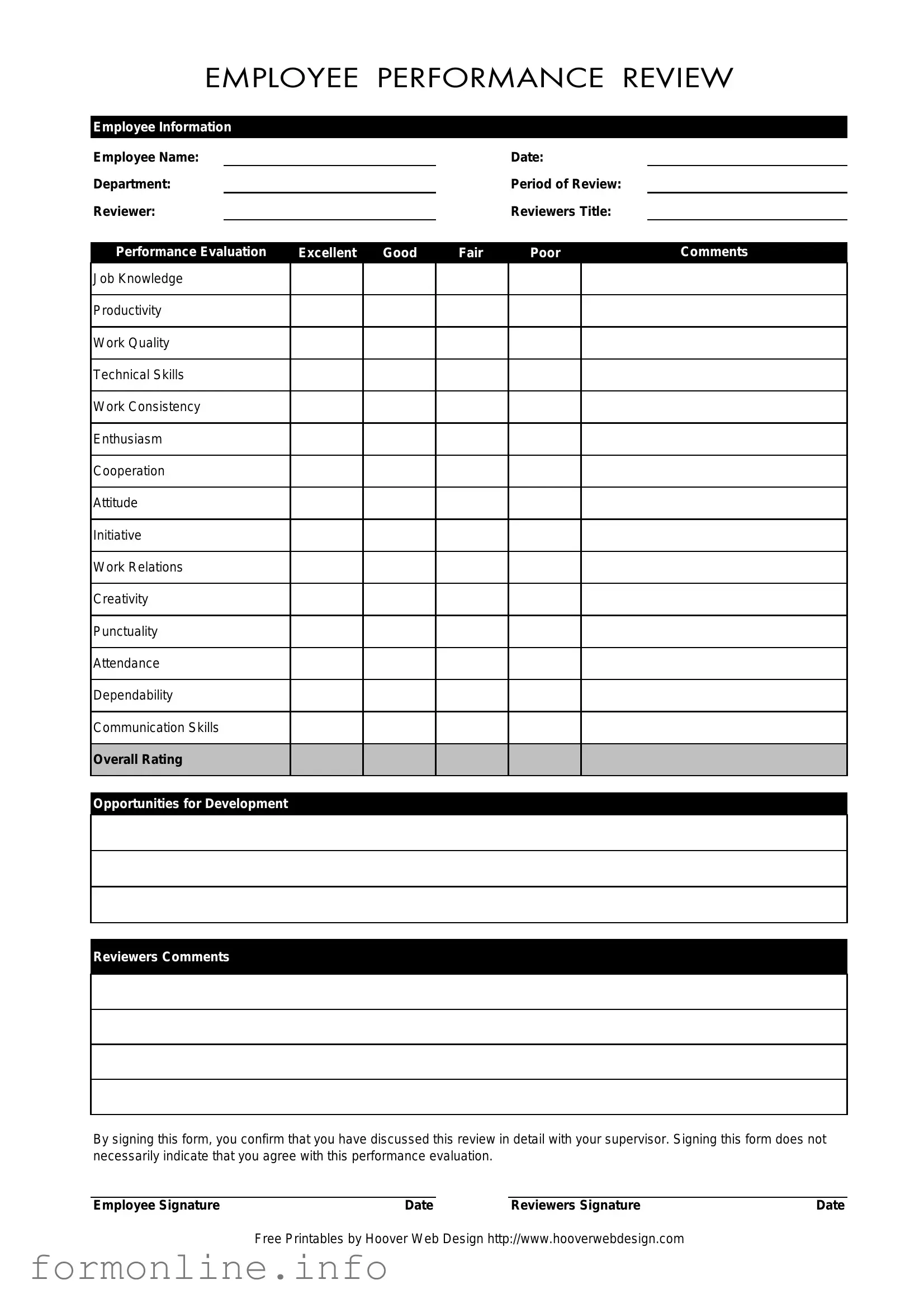The Employee Evaluation Form is similar to the Performance Appraisal Form, which is widely used in many organizations. Both documents aim to assess an employee's work performance over a specific period. They typically include sections for various competencies such as job knowledge and productivity. The Performance Appraisal Form often provides a structured approach to feedback, enabling both the employee and the supervisor to discuss strengths and areas for improvement in a formal setting.
Another document that shares similarities is the Self-Assessment Form. This form allows employees to evaluate their own performance before a formal review takes place. Like the Employee Evaluation Form, it includes criteria for assessment, encouraging individuals to reflect on their contributions and growth. The self-assessment process fosters a sense of ownership over one’s performance and can lead to more meaningful discussions during the review meeting.
The 360-Degree Feedback Form also aligns closely with the Employee Evaluation Form. This document gathers feedback from multiple sources, including peers, subordinates, and supervisors. While the Employee Evaluation Form typically focuses on the supervisor’s perspective, the 360-Degree Feedback Form provides a more comprehensive view of an employee's performance. This holistic approach can enhance the evaluation process by incorporating diverse viewpoints.
The Job Description Document is another related form. It outlines the responsibilities and expectations of a specific role within the organization. Both the Job Description and the Employee Evaluation Form serve as benchmarks for assessing performance. By comparing an employee’s actual performance to the outlined responsibilities, supervisors can identify areas of strength and opportunities for development.
Additionally, the Goal Setting Document is quite similar. This form is used to establish specific, measurable objectives for an employee to achieve within a designated timeframe. The Employee Evaluation Form often references these goals during the review process. By aligning performance evaluations with previously set goals, both employees and supervisors can track progress and adjust expectations as necessary.
The Development Plan Document also shares common ground with the Employee Evaluation Form. This document outlines strategies and resources for employee growth and improvement. After a performance review, it can be beneficial to create a Development Plan that addresses any areas identified during the evaluation. Both documents work together to support an employee’s career progression and skill enhancement.
To ensure a seamless transition of ownership when transferring a mobile home, it is vital to utilize the appropriate documentation, such as the Mobile Home Bill of Sale. This legal form not only safeguards the interests of both the buyer and seller but also provides essential details that finalize the transaction, similar to how various assessment forms facilitate clear evaluations in employee performance management.
Finally, the Training Needs Assessment Form is another document that complements the Employee Evaluation Form. This form identifies skills or knowledge gaps that may require additional training or resources. By using insights from the performance evaluation, organizations can tailor training programs to meet the specific needs of their employees, ultimately fostering a more effective workforce.

